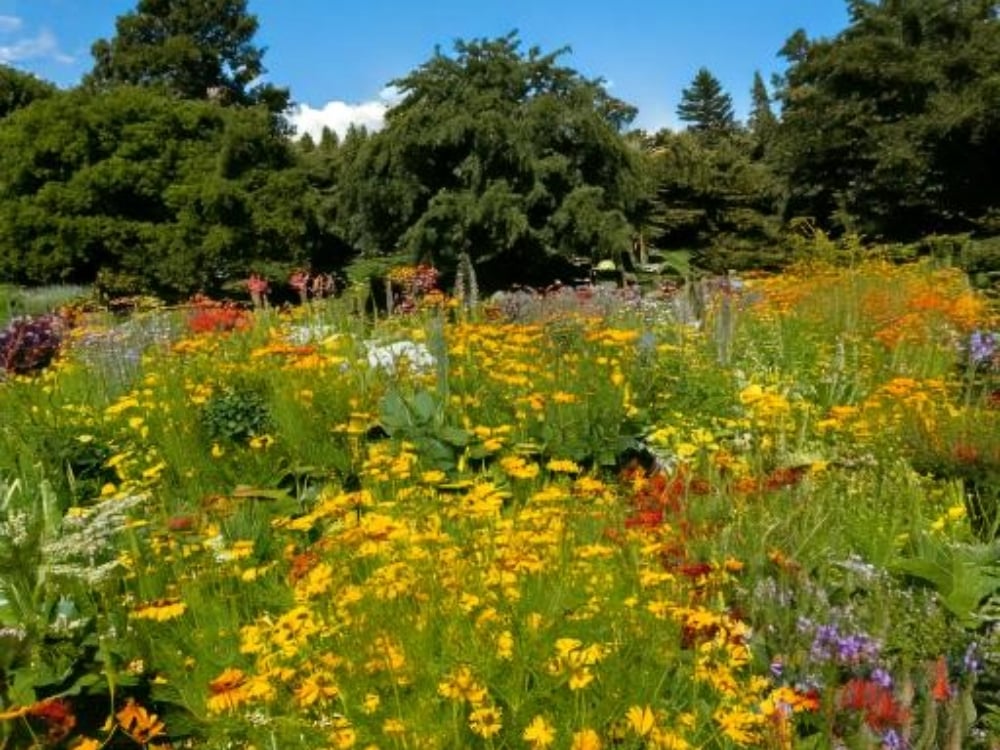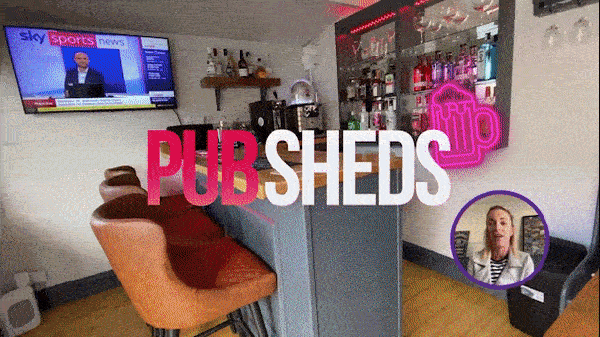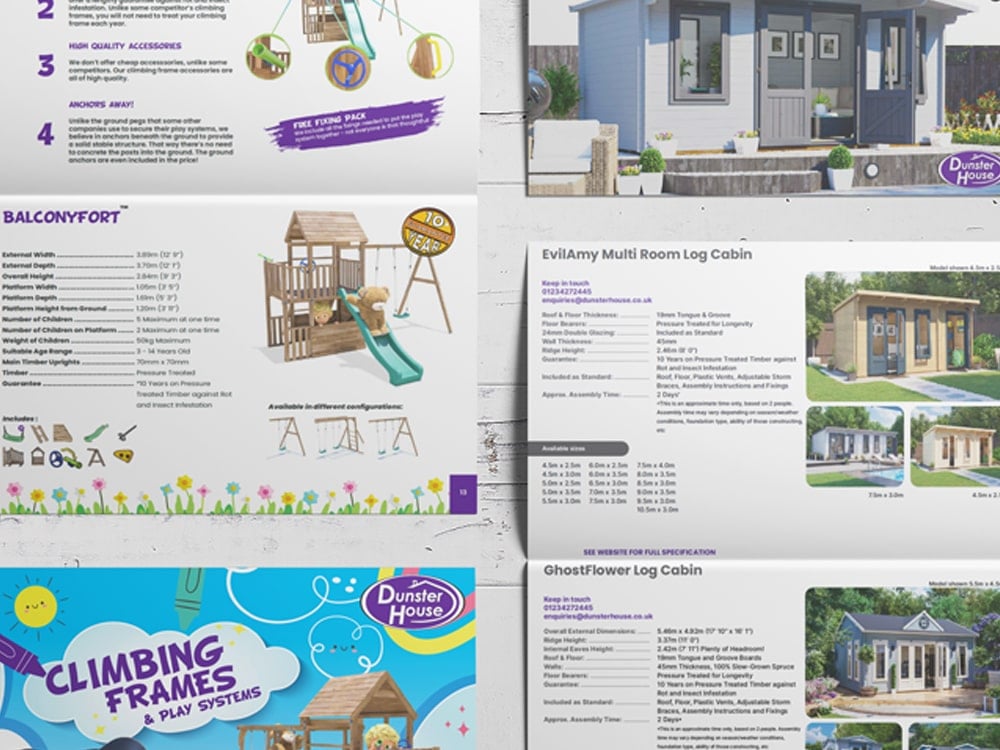Create a beautiful and thriving garden by selecting flowers that bloom at different times, you can enjoy a continuous display of colour throughout the growing season. You can also introduce five fast-growing flowers, that can add vibrant hues, to your garden. This guide will also explore the benefits of planting bulbs versus seeds, the importance of understanding your garden’s environment, and how to enhance your garden with decorative structures and sheds.
Contents
5 Fast-Growing Flowers
Nigella (Love-in-a-Mist):
This annual flower is known for its lovely blue or white blossoms. Nigella seeds can be sown directly into the soil, germinating quickly to produce lovely summer blooms.
Ideal Conditions: Full sun for 6-8 hours is the ideal amount for Nigellas. Fertile and well-drained soil with a pH of 6-7 (acidic to neutral) is their preferred soil type. Water your Nigella 1 inch weekly for the best results but it will tolerate drier conditions.
Companion Plants: Marigolds, Basil, Borage, Nasturtiums
California Poppies:
Relatively fast-growing. California poppies can go from a seed to being in bloom in as little as 60 days. Most poppies like quite warm temperatures so their blooming period starts in the summer months.
Ideal Conditions: Like the region they share a name with sunny weather is welcomed by these plants in order to bloom to their full potential. In keeping with this line of thought they thrive in well-drained sandy soil. Californian poppies are drought-resistant plants and prefer infrequent but relatively heavy watering to light and frequent. They like neutral to slightly alkaline conditions but will grow in the range of pH 6.5-8.
Companion Plants: Lavander, Marigolds, Borage
Cosmos:
 With daisy-like flowers in shades of pink, white, and purple, cosmos are popular fast-growing flowers. Sow these flowers in early spring and you can expect them to flower from May to October, attracting butterflies and bees when they have done so.
With daisy-like flowers in shades of pink, white, and purple, cosmos are popular fast-growing flowers. Sow these flowers in early spring and you can expect them to flower from May to October, attracting butterflies and bees when they have done so.
Ideal Conditions: Full sun for six hours a day. Well-drained with a slightly acid to slightly alkaline pH (pH 6-8). They don’t like the extremes in soil whether that be very dry or very wet.
If you are growing cosmos for their flowers and not their foliage it would be best not to use soil rich in nutrients. Regular watering especially in their growth period but after that they are relatively drought resistant.
Companion Plants: Nasturtiums, Sunflowers, Marigolds, Basil
Sweet Pea:
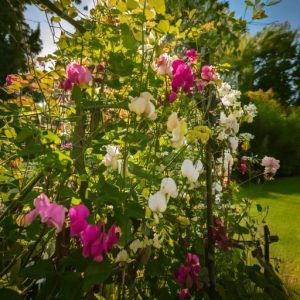 Sweet peas are renowned for their incredible fragrant, colourful flowers. These climbing plants grow rapidly, covering trellises or pergolas with beautiful blooms. Plant them in a sunny spot and provide support for climbing. Make use of your garden’s vertical space!
Sweet peas are renowned for their incredible fragrant, colourful flowers. These climbing plants grow rapidly, covering trellises or pergolas with beautiful blooms. Plant them in a sunny spot and provide support for climbing. Make use of your garden’s vertical space!
Ideal Conditions: While Sweet Peas prefer full sunlight they can accept dappled shade. For their soil preferences Sweet Peas like well-draining soil that still has the ability to retain moisture – this can be done with soil rich in organic matter. Plenty of moisture and cooler temperatures are also favourites of sweet peas (perfect for the British climate). They like neutral to slightly alkaline conditions (pH 7-8).
Companion Plants: Nasturtiums, Spinach, Marigolds, Basil
Sunflower:
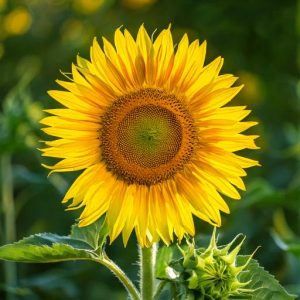 In contrast to what its name may suggest this is an unexpectedly hardy plant. Counterintuitively, they can weather spring frost well and grow soon after. They can also help you make use of the vertical space in your garden and will offer shade to other plants.
In contrast to what its name may suggest this is an unexpectedly hardy plant. Counterintuitively, they can weather spring frost well and grow soon after. They can also help you make use of the vertical space in your garden and will offer shade to other plants.
Ideal Conditions: Though they may be able to survive in cold conditions sunflowers true to their name like the sun and will thrive best in full, bright sun for 6 hours a day.
Sunflowers like a well-drained soil that is rich in organic matter. They also like slightly acidic to neutral pH levels (pH 6-7). Even though sunflowers like well-draining soil they also appreciate being watered enough to keep their soil damp (not wet), especially in the summer. This plant really is full of juxtapositions!
Companion Plants: Nasturtiums, Lettuce, Lavender
Bulbs VS Seeds
Seeds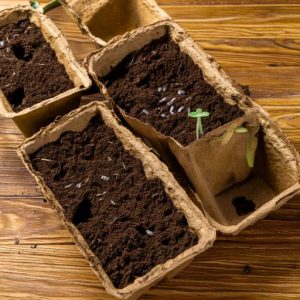
Seeds will take longer to sprout and need more care to become fully formed flowers – they will need plenty of light in their infancy. A good method to help your seed get enough light is sowing the seeds and then raking the ground where you have planted them or placing them in the soil and sprinkling a layer of soil over them. However, they tend to be more well-adapted to your garden’s environment as full-grown flowers.
There is a greater variety of seeds on the market in comparison to bulbs. Additionally, you can find quick germinating seeds which may help reduce growing times.
Bulbs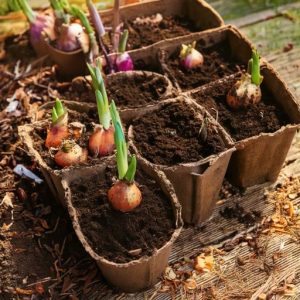
Bulbs will tend to grow faster than seeds. They are also generally lower maintenance and have a higher chance of reaching their flowering period. However, they will take longer to plant as you have to sow each bulb individually. They also more readily become invasive so you will have to keep them in check.
Different plants will perform better in your garden after being planted as either a seed or a bulb in particular. For example, sweet peas are happier if they start their life as a seed rather than a transplant.
Your Garden Environment
Plants will thrive best in their ideal habitat – that seems like a given. So, let’s get into some factors that can determine if a plant will grow well in your garden:
Types of Soil
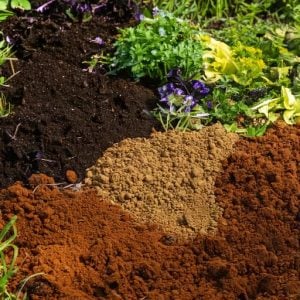 Clay Soil: Retains water, slow to heat, cracks when dry, high in nutrients, and easily compacted, small particle composition with only under 0.002mm.
Clay Soil: Retains water, slow to heat, cracks when dry, high in nutrients, and easily compacted, small particle composition with only under 0.002mm.- Sandy Soil: Grainy with the main components of the soil being 0.05-2mm in size, quick draining, quick warming, low in nutrients, often acidic, opposite of clay soils.
- Silt Soil: The middle ground between sandy and chalk soils, not to be confused with loamy soils. This soil is made up of mid-sized matter – which means particles between 0.002mm and 0.05mm
- Loamy Soil: A mixture of different soil types which means it balances out the properties of different soils. This makes it ideal for a wide variety of plants.
- Peat Soils: Rich in organic matter, normally high in water, quite rare.
- Chalky (lime-rich) Soils: High in calcium carbonate, very alkaline, no particular composition.
To find out the general soil type for your area, check with the UK Soil Observatory. You can also identify your garden’s soil type by examining its features and making an educated estimation. If your soil isn’t suitable for the plants you want, try adding a different soil type to change its composition.
Soil pH
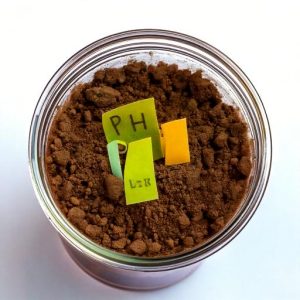 Test your soil so you can grow plants that do well in certain pH levels. Alternatively, you can use limestone (aka garden lime) to reduce acidity in soil. This is because one of its active ingredients is calcium carbonate; this can also be found in ground chalk and calcified seaweed.
Test your soil so you can grow plants that do well in certain pH levels. Alternatively, you can use limestone (aka garden lime) to reduce acidity in soil. This is because one of its active ingredients is calcium carbonate; this can also be found in ground chalk and calcified seaweed.
If your soil is too alkaline using acidifying materials such as sulphur, aluminium sulphate and ferrous sulphate can help neutralise the pH of your soil.
Your soil pH is harder to find on your own than your soil type however you can get kits to test your soil pH at home or you can send it to a lab for more careful analysis.
Another method you can use to find if you have calcium carbonate in your soil making it alkaline is to pour a little vinegar on a small sample of the soil. If it fizzes there is a good chance that calcium carbonate is present. The UK Soil Observatory can give a general view of soil pH in your area.
Other Factors to Consider:
-
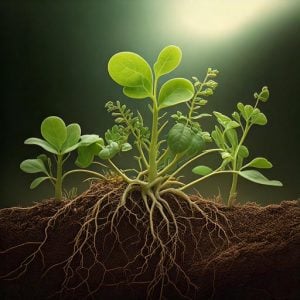 Sun Exposure: Consider how much sun your garden gets, when in the day it gets it, and the garden’s orientation – if it is a south-facing garden it will get more sun than a north-facing garden.
Sun Exposure: Consider how much sun your garden gets, when in the day it gets it, and the garden’s orientation – if it is a south-facing garden it will get more sun than a north-facing garden.- Water: The amount of rainfall and your soil’s water retention will have an effect on plant growth. In high rainfall areas with water-retentive soil, choose plants that thrive in wet environments, or adjust your soil composition and watering habits.
- Space: Ensure your plants have enough space to grow, considering their size and the presence of other plants. It could be that if you have plants that love shade and another that provides it, they could be companion plants.
- Companion Planting: Companion planting involves one plant providing benefits to another, while symbiotic planting involves all plants in an ecosystem benefiting each other. Both methods can help with pest prevention.
Garden Buildings for the Best Garden
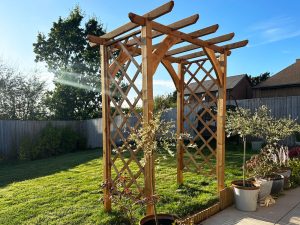
Decorative Furniture and Pergolas
Decorative furniture and pergolas can be a fantastic addition to your garden landscape. With the help of garden structures, you can grow plants in unexpected places and utilise space, surrounding yourself with flowers. Sweet Peas and Sunflowers thrive when supported and with structure can grow quite high – another way to achieve this is by adding trellises to your fences.
Sheds
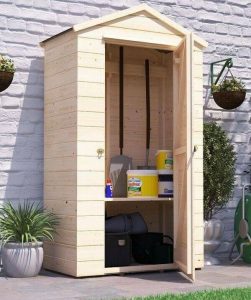
Sheds are an elegant solution to storing your gardening equipment and can span a range of different sizes. If you are primarily searching for somewhere to store your tools a small shed is perfect for this – we have even made a shed purpose-built for this – The Talia Heavy Duty Garden Tool Shed. This garden building is under 2.5 meters high, so you can avoid the need for planning permission and it’s compact nature means it won’t take up too much room so you have more room for your plants. This also means that a competent DIYer can typically build the shed in just two days, allowing you to quickly get back to enjoying your garden.
However, sheds have more uses than just storing possessions (though they are fantastic for storage!), consider getting a shed with windows this provides a way you can use your shed to protect your potted plants against frost – bring them into the shed. That way you can maximise your growing time and get beautiful blooms all the sooner!
Addroom – Conservatory Alternative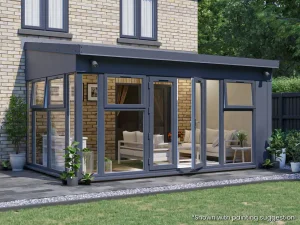
The British weather is variable but your enjoyment of your garden is constant so don’t letcold and wet weather drive you away. With an Addroom Conservatory Alternative, you can get panoramic views of your garden without having to leave the comfort of your home. For the best views of your garden check out the Addroom Vision 2 (in multiple size) for glass walls looking out onto your garden. If you’d like to keep the view but increase your privacy try the Addroom Vision 1 (in multiple sizes).
By choosing the right flowers, understanding your garden’s unique conditions, and incorporating thoughtful design elements, you can cultivate a stunning and sustainable garden. Whether you opt for fast-growing flowers, experiment with bulbs and seeds, or add decorative structures, we hope your garden will become a beautiful and inviting space that you can enjoy year-round.
Happy gardening!


